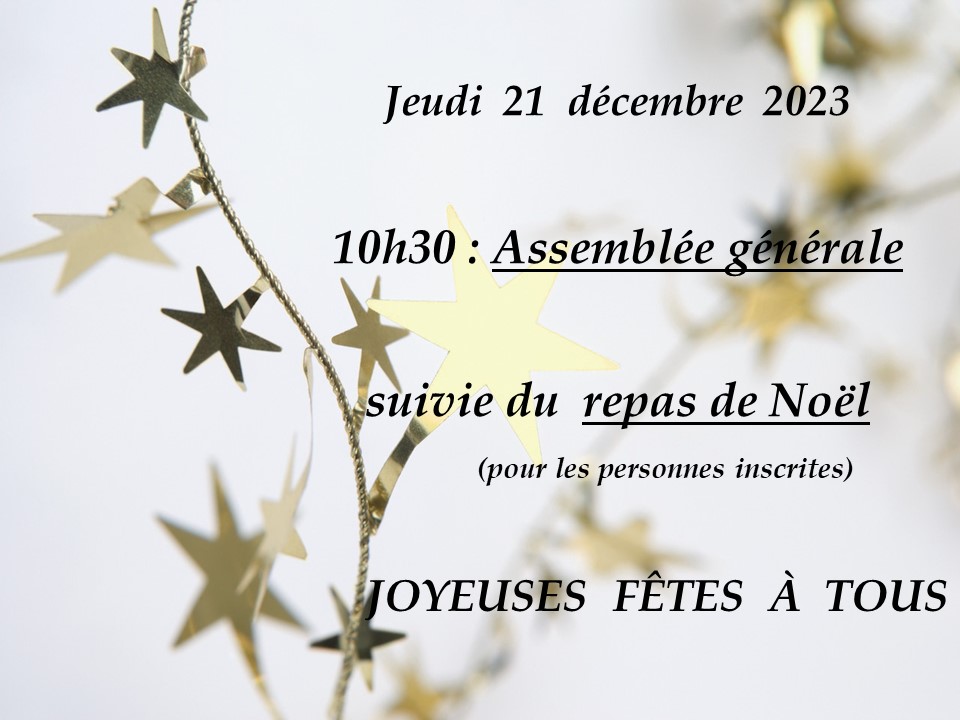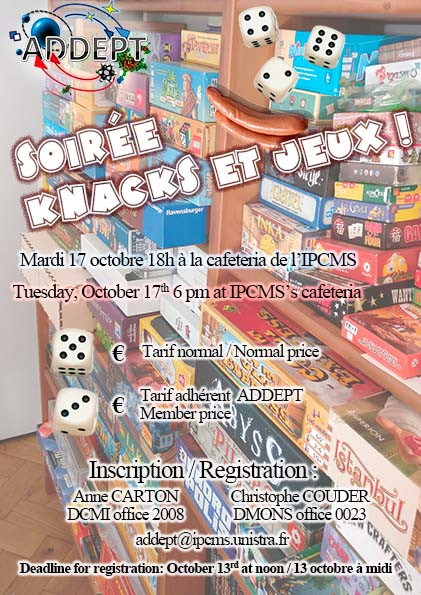
Annual general meeting and Christmas party


Speaker : Amélie JUHIN (Institut de Minéralogie, Physique des Matériaux et Cosmochimie (IMPMC). CNRS-Sorbonne Université)
Abstract : X-ray spectroscopies performed at synchrotron light sources, such as X-ray Absorption Spectroscopy and Resonant Inelastic X-ray Scattering are powerful tools to study complex materials, due to their chemical selectivity that allows disentangling the respective contributions of different atomic species. In this talk, I will show how the use of incident polarized x-rays (either linear or circular) can allow a deeper understanding of the electronic structure and reveal emergent properties, with a focus on remarkable magnetic nanomaterials: Single Molecule Magnets, bimagnetic nanoparticles, ferrofluids, ultra-thin nanowires. Moreover, I will illustrate how the combination of these spectroscopies with x-ray microscopy can provide valuable information with nanoscale spatial resolution, exemplified by recent results obtained on magnetotactic organisms.
13:00 – 13:30 : Prof. Yusuke Noda (Okayama Pref. Univ.)
Stability analysis of large-scale defects in Si using machine learning interatomic potential
13:30 – 14:00 : Prof. Tokuhisa Kawawaki (Tokyo Univ. Sci.)
Synthesis and catalytic properties of ligands-protected metal clusters
14:00 – 14:30 : Prof. Masato Nakaya (Nagoya University)
STM/STS Characterization of Thermally Stable Array of Discrete Fullerene Molecules formed on a Two-Dimensional Nanospace Adlayer of Macrocycles
14:30 – 15:00 : Prof. Ayae Narutaki (Nagoya University)
Design and application of protein nanofibers
15:00 – 15:30 : Coffee break
15:30 – 16:00 : Prof. Jun Onoe (Nagoya University)
Recycling of precious metals using nanospace materials
16:00 – 16:30 : Dr. Senthil Kuppusamy (INT-Karlsruhe Institute of Technology)
Coherent light-matter interfaces based on luminescent Eu3+ complexes
16:30 – 17:00 : Prof. Florian Banhart (IPCMS, Univ. Strasbourg)
Photoswitchable materials and fast chemical reactions in nanocrystals studied by ultrafast electron microscopy
17:00 – 17:30 : Patrick Lawes (IPCMS, KIT)
Non-sublimable molecules deposited by Electrospray Controlled Ion-Beam (ESI-CIBD) and probed by STM.
The meeting will take place in the IPCMS’ Auditorium and via BBB. Link : https://bbb.unistra.fr/b/cob-lyy-20x-t6l
Contact : Noémi Cobolet, chargée de mission science ouverte de l’Université de Strasbourg: openaccessmonth[at]unistra.fr
On the program, small games during the aperitif: chips/beers/soft drinks. Then on the menu, knacks and potatoes salad and slightly longer games, ice cream and fruits for dessert. Veggie and vegan option will be proposed as well. Do not hesistate to bring your own favorite games with you and to make them us discover! In any case, a selection of boardgames will be at your disposal and we will take the time to explain you their rules. Happiness and friendliness will be the words of this event !
Participations fees are of 5 euros, or 3 euros if you are ADDEPT members (possibility to get the membership card during registration)
We are looking forward to playing with you!

Two main topics will be discussed:
– proposals from the “sustainable development group” and discussed during sustainable development meetings within the IPCMS
– feedback on the HCERES report.
The courses will take place over three full days and will include frontal teaching (ca. 18h) and a session of exercises and Q&A (ca. 3 h), delivered by local, national and international experts. The language will be English.
List of speakers:
Andreas J. HEINRICH
| Center for Quantum Nanoscience, Institute for Basic Science (IBS) Department of Physics, Ewha Womans University Seoul, Republic of Korea |
Résumé:
There is a strong international research effort in the area of quantum information science. Here, the concepts of quantum coherence, superposition and entanglement of quantum states are exploited. These concepts were originally shown with photons as well as atoms and ions in vacuum traps. Over the past two decades, many advances at studying such quantum coherence in solid-state and molecular architectures have evolved [1].
In this talk we will focus on quantum-coherent experiments in Scanning Tunneling Microscopy (STM). STM enables the study of surfaces with atomic-scale spatial resolution and offers the ability to study individual atoms and molecules on surfaces. Here at Ewha, we have one of the world’s best facilities for such studies. STM can also be used to move atoms with atomic-scale precision, which enables us to build engineered nanostructures where each atom is in the exactly correct place.
In order to study qubits with STM, we recently learned how to combine STM with electron spin resonance [2,3]. Spin resonance gives us the means to quantum-coherently control an individual atomic or molecular spin on a surface. Using short pulses of microwave radiation further enables us to perform qubit rotations and learn about the quantum coherence times of our spins [4]. Finally, we will finish with unpublished results on multi-qubit operations with spins on surfaces.
1. Andreas J. Heinrich, William D. Oliver, Lieven M. K. Vandersypen, Arzhang Ardavan, Roberta Sessoli, Daniel Loss, Ania Bleszynski Jayich, Joaquin Fernandez-Rossier, Arne Laucht, Andrea Morello, “Quantum-coherent nanoscience”, Nature Nanotechnology, 16, 1318-1329 (2021).
2. Susanne Baumann, William Paul, Taeyoung Choi, Christopher P. Lutz, Arzhang Ardavan, Andreas J.
Heinrich, “Electron Paramagnetic Resonance of Individual Atoms on a Surface”, Science 350, 417 (2015).
3. Yi Chen, Yujeong Bae, Andreas Heinrich, “Harnessing the Quantum Behavior of Spins on Surfaces”, Advanced Materials 2022, 2107534 (2022).
4. Kai Yang, William Paul, Soo-Hyon Phark, Philip Willke, Yujeong Bae, Taeyoung Choi, Taner Esat, Arzhang
Ardavan, Andreas J. Heinrich, and Christopher P. Lutz, “Coherent spin manipulation of individual atoms on a surface”, Science 366, 509 (2019).
Support from Institute for Basic Science (IBS-R027-D1) is gratefully acknowledged
10:15 – 10:45: Paloma Arroyo Huidobro
Departamento de Física Téorica de la Materia Condensada, Uni. Autónoma de Madrid
Controlling light-matter interactions with subwavelength emitter arrays
10:45 – 11:00: coffee break
11:00 – 11:30: Denis Basko
Université Grenoble Alpes, CNRS, LPMMC, Grenoble
Local bistability under microwave heating for spatially mapping
disordered superconductors
11:30 – 12:00: Jean-Noël Fuchs
Sorbonne Université, CNRS, LPTMC, Paris
The SSH model and the Zak phase